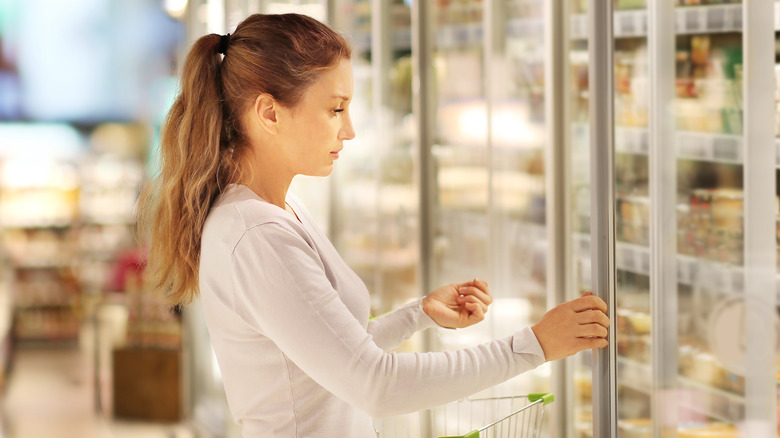How Buying Frozen Food Can Save You Money
Fresh food is expensive and, according to some sources, it's only getting pricier. Fresh Fruit Portal reported last February that prices for fresh berries, including blueberries, raspberries, strawberries, and blackberries, have "skyrocketed" in 2021 and, according to US Foods, as of October 1, the price of fresh boneless thigh chicken "continue[s] to be at record highs." Additionally, Eat This, Not That! reports that the prices of multiple fresh products including eggs, bacon, milk, and beef have also increased to some of their highest levels. And that's without even considering organic products.
Luckily, there's one easy way to keep more cash in your wallet and still eat. According to Forbes, frozen foods are a viable alternative to fresh foods and can be more than 50% less expensive. To provide specific examples, Fresh From the Freezer claims that frozen seafood is 25% cheaper and frozen broccoli is over 50% less expensive than their fresh counterparts.
Saving dough in the frozen food aisle
Fresh From the Freezer states that one-third of the food purchased in the U.K. is eventually thrown away. Feeding America reports that 40% of all food in the United States is wasted. Forbes claims that this problem can be lessened by purchasing frozen foods, as they can be preserved longer than fresh foods without going bad. Therefore, you won't have to chuck them after a few days, like fresh food that has spoiled. Fresh From the Freezer also points to the pros of prepared frozen foods, stating that they provide more effective portion control, which also results in less food being thrown away.
Just Restaurant Supplies also makes an interesting claim, stating that shipping methods have an impact on food prices. Fresh food is more difficult to transport, has to be delivered more quickly than frozen foods, and has to be sold within a certain time frame before going bad — usually three to five days. Additionally, consider food seasons. Just Restaurant Supplies uses the example of tomatoes, claiming they can cost $1 in the summer and sometimes $3 in the winter. When food is frozen, this cost increase is avoided.

